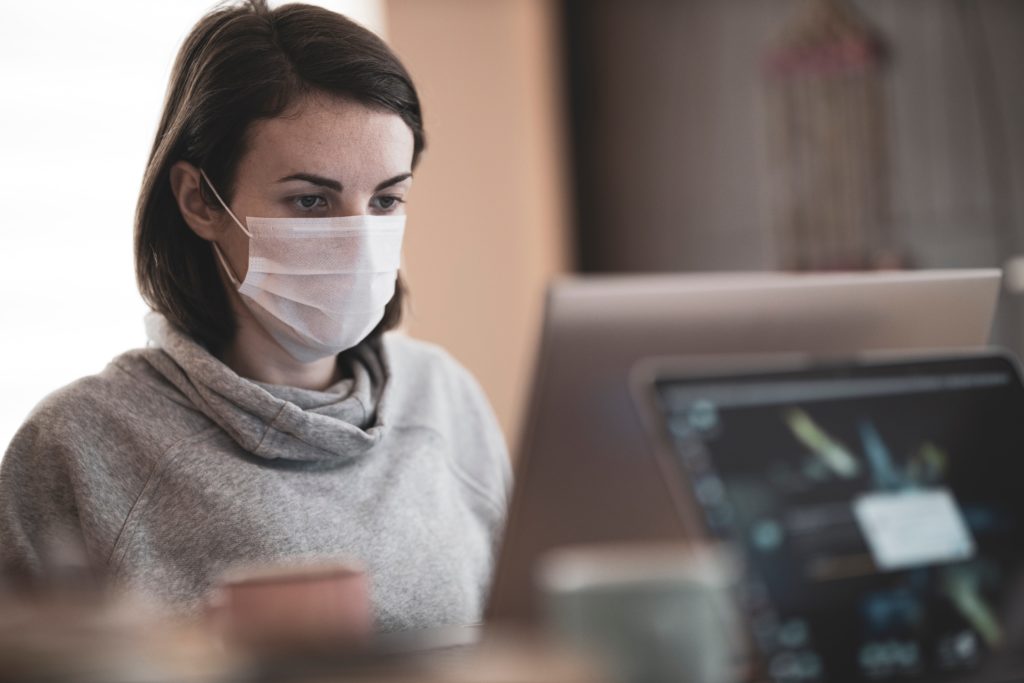Blog

How to Transition Back to Office Life Post-Pandemic
Many states are beginning to ease COVID-19 restrictions and stay-at-home orders. This positive step can come with some anxiety as well. Many organizations will be transitioning back into the office from home as a result. How can we safely go back into the office knowing that people may become anxious at the thought? What precautions should we be taking to keep ourselves and others out of harm’s way? Follow this helpful guide to learn more!
A phased-in approach
Some companies may choose to have their employees return in phases. This may look different depending upon the organization and their needs but generally speaking, essential workers should return first followed by other employees. That being said, a phased-in approach can take some time. A full phase-in could take a couple of weeks or even months depending upon how the company rolls out its new policies. This approach can result in limiting infection rates as less people would be present within the workplace day-to-day. Eventually, all other employees will be phased-in and further safety measures will be needed to be put in place as well.
Be aware of those around you
Once employees return to the office, it is important to be mindful of your fellow co-workers. They too are navigating this new normal and learning as they go. Your organization may designate social distancing rules as far as where workstations should be positioned. If a co-worker is uncomfortable being in close contact with others, respect their wishes and keep your distance. It also might be helpful to employees for companies to provide signage detailing any social distancing policies.
Mask up!
Additionally, if you feel safer wearing a mask or gloves to work, then do so! You will not only be protecting yourself, but others as well. It is one of the easiest ways to promote a healthy work environment as well as to prevent you from touching your mouth and nose easily. People that are asymptomatic may not know they are even sick. Masks may be invaluable as a result. Some organizations might even provide masks to its employees as a means to help curve the spread.
Avoid crowded shared spaces and wash your hands regularly
Avoid high-traffic, crowded areas in the office such as the shared kitchen or conference rooms. If you need to visit these locations, do so smartly. Stay at least 6 feet away from others or wait your turn to enter the room as others exit to avoid any close contact. If in the kitchen, avoid using shared coffee makers or other surfaces that are frequently touched such as door knobs and fridge handles. When in conference rooms, try to arrange chairs at least 6 feet away if you are able. Try to limit meeting times if possible, as well. A solution can be to utilize video conferencing instead of face-to-face interaction. Slowly, as COVID restrictions wane, in-person meetings can resume within the dedicated conference area.
Be sure to wash and sanitize your hands anytime that you touch new surfaces, before and after you eat, and multiple other times throughout the day to limit the spread of the virus. Use an antibacterial soap along with warm water for at least 20 seconds, being sure to scrub your hands entirely. If soap and water are not available, hand sanitizer is another suitable option to cleanse your hands efficiently.
Sanitize your workstations thoroughly
Cleanliness truly matters when returning back to your office. If your organization does not provide cleaning supplies such as hand sanitizer, disinfectant spray, or cleaning wipe for example, it might be a good idea to stock up prior to your return. Be sure to wipe down your workstation throughout the day, preferably first thing in the morning, after lunch, and prior to when you leave. This will ensure that your surrounding area remains in sterile condition.
In addition to sanitizing your workstation, be mindful of other surfaces you touch. Sanitize those surfaces as you go. This includes door handles, elevator buttons, desks, chairs, and the list goes on.
Remain calm
You are not the only one that might be feeling heightened levels of anxiety about transitioning back into the office post-pandemic. The best strategy to acclimate back into the office is to remain calm. Take a few deep breaths and a quick walk around the office to clear your mind. Remaining calm will help to lessen your anxiety levels during this uncertain time. No one knows the outcome of their return to work experience, but by staying calm, you will have a much easier time transitioning. Educating yourself on proper safety measures to take and understanding your company’s implementation of these measures will do wonders for your overall mental health when returning.
If you are ill, stay home!
Finally, and most importantly, if you are feeling sick at all, STAY HOME! If you suspect that you could have symptoms or have contracted COVID-19, stay home and seek medical attention if needed. It may also be wise to take your temperature each morning prior to leaving for work. Even if you feel fine, an elevated temperature can be a sign that you truly are ill. Be smart and do not put others at risk for getting sick.
It will of course take time getting used to and adjust to social distancing measures as well as other precautions. These are strange and new times we are dealing with, but with attentiveness and care, your transition back into the office should go smoothly. What steps will you be taking to stay healthy and well?
Connect With PrincetonOne
Whether you are seeking critical talent, unique recruitment solutions, or access to greater opportunities, our consultants are prepared to elevate your success.
